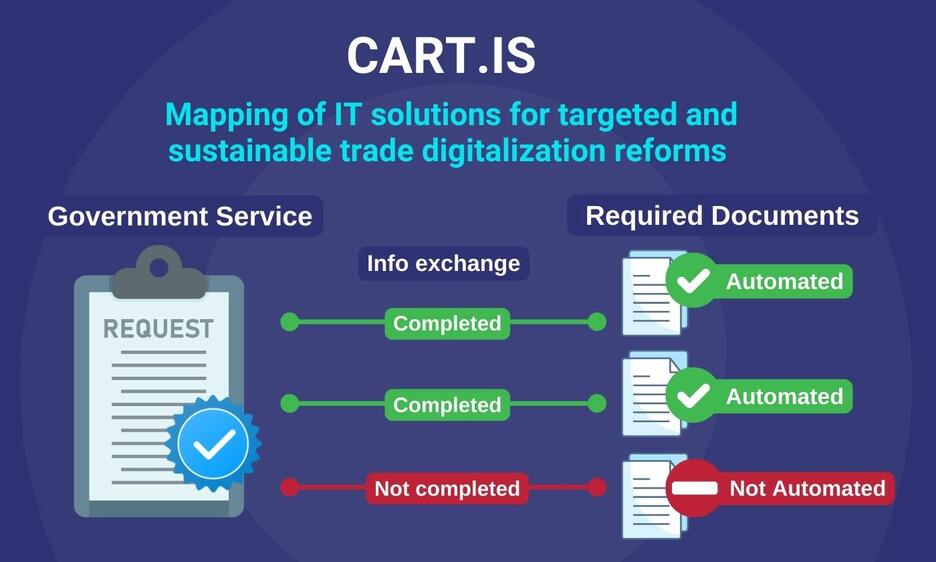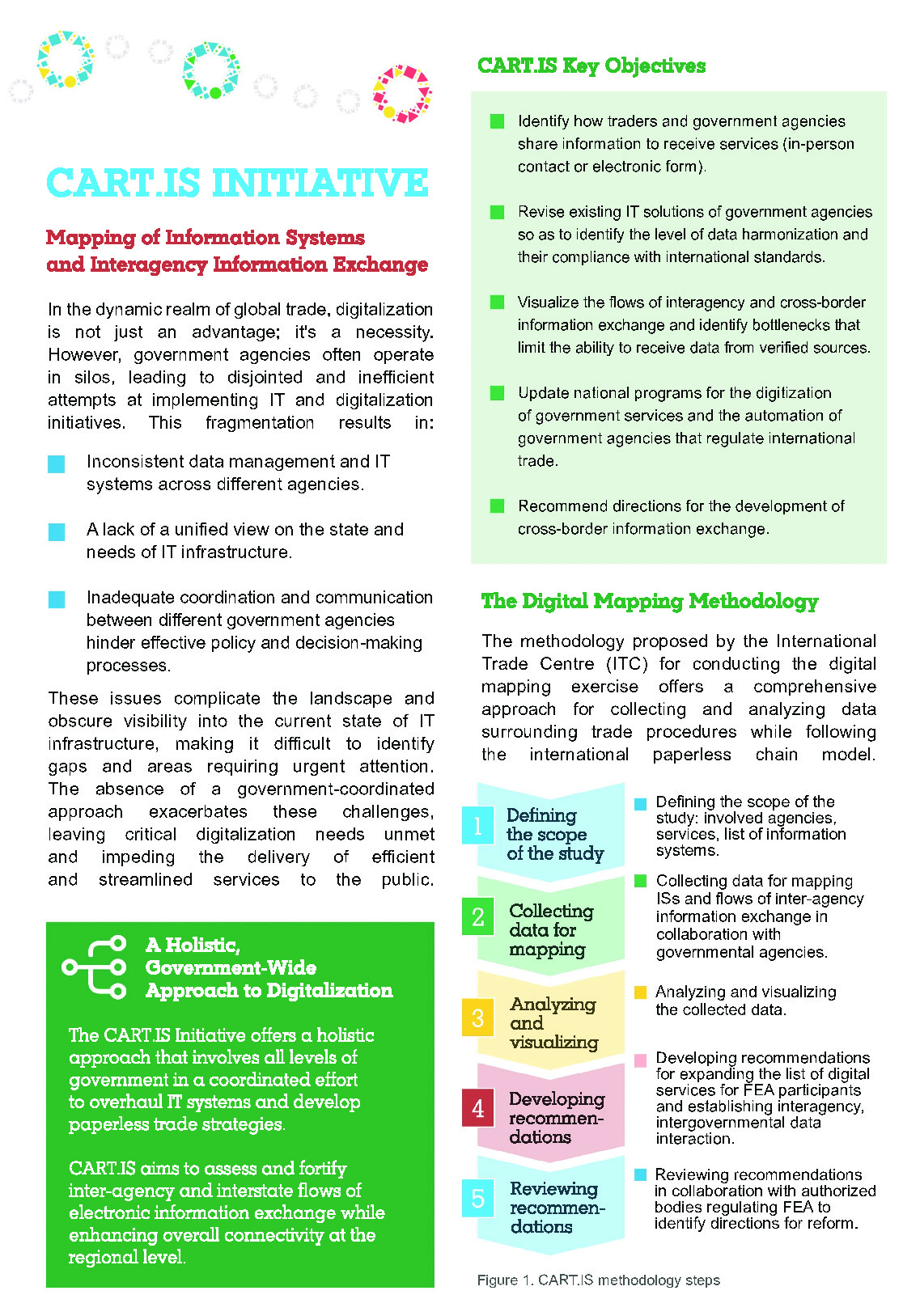


ITC advances trade digitalization in Central Asia
Trade in Central Asia often relies on paper forms. Digital systems aren’t integrated, either within countries or within the region.
To address those challenges, the International Trade Centre (ITC) piloted the CART.IS system in Kyrgyzstan and Uzbekistan. By mapping paperless processes, the system shows how to make trade faster.
Pilot results in Kyrgyzstan and Uzbekistan
The pilot in Kyrgyzstan and Uzbekistan demonstrated how the initiative could transform trade processes in the region.
CART.IS stands for Mapping of Information Systems supporting cross-border trade formalities. The pilot involved 28 government agencies, analyzing 68 documents and services across three major border checkpoints. By mapping over 150 interagency information exchanges, CART.IS identified inefficiencies and digital gaps to streamline trade procedures at these border points.
Across Central Asia, trade and customs government agencies struggle with fragmented digital systems. CART.IS shows how governments can digitalize processes to reduce the time and costs of trade.
A one-stop solution to close the cross-border trade digitalization gap
Based on a robust methodology, CART.IS allows governments to easily map trade procedures, services, interagency cooperation, and information exchange flows. The results show how to find solutions among government agencies, and between government and businesses.
With CART.IS findings, agencies can quickly identify gaps and key improvement areas, simplify government services, boost coordination, streamline procedures, and drive efficient digitalization.
The project is set to expand to Tajikistan by the end of 2024, further enhancing interagency cooperation and economic growth across the region.
It’s implemented by the EU-funded ITC Ready4Trade project and addresses these challenges by providing a tool for streamlining and rationalizing digitalization reforms.

















